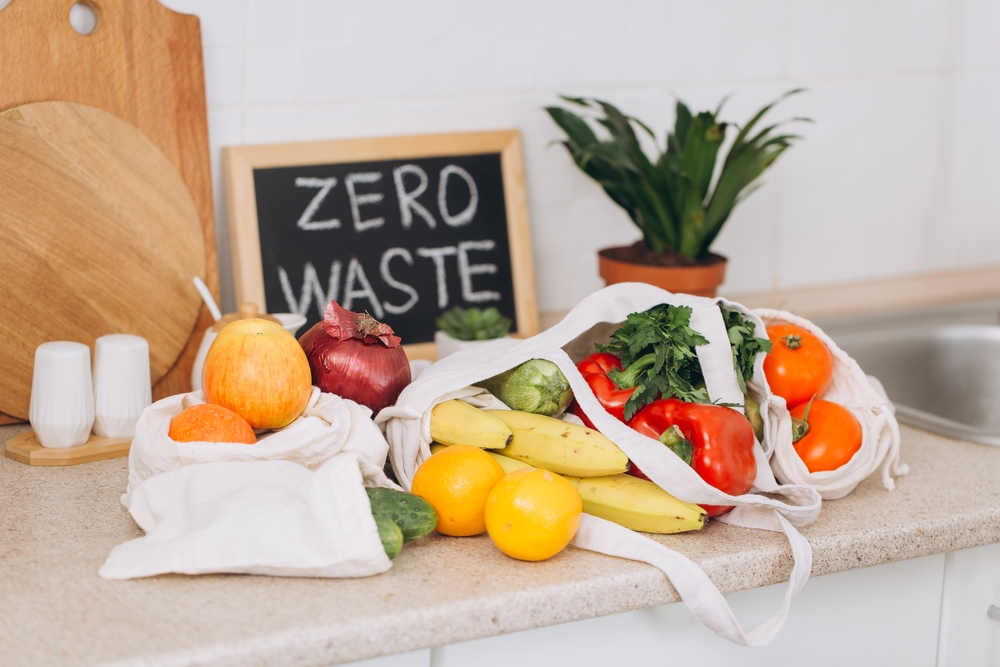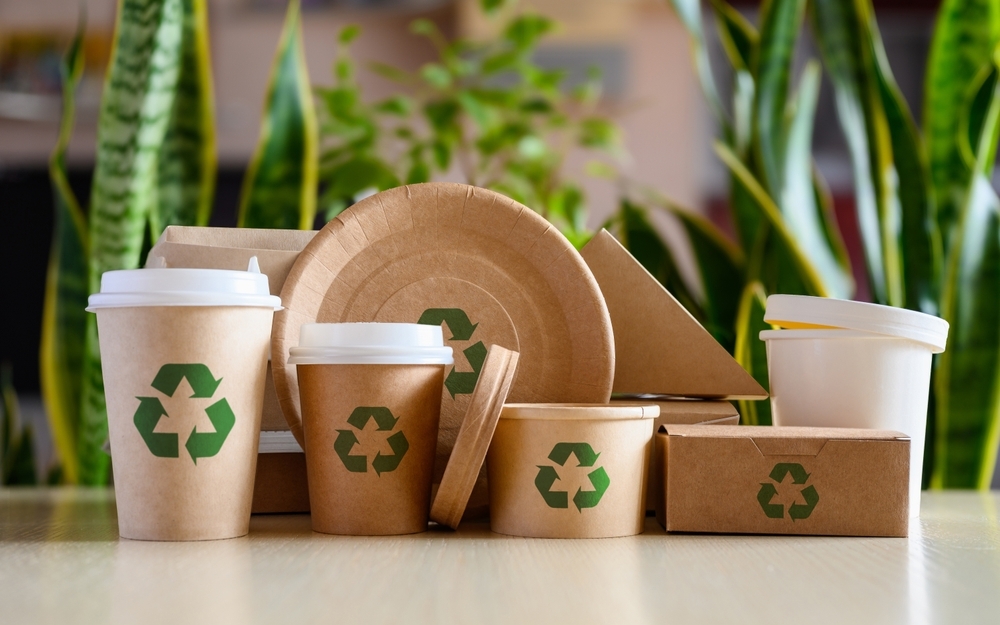Top Strategies on How to Reduce Food Waste in Restaurants: A Practical Guide
By Hamza Benhlima · 4. March 2024
Each year, restaurants throw away millions of dollars worth of food, contributing to both environmental problems and financial losses.
Learning how to reduce food waste in restaurants is critical, not just for your bottom line, but also to preserve our planet’s resources.
In this article, we provide you with a practical guide filled with strategies that restaurant owners and managers can use to significantly cut down on waste.
We’ll explore steps like conducting waste audits, smart purchasing, efficient food preparation, creative menu design, proper storage, and much more to help you achieve a more sustainable and profitable operation.
Key Takeaways
- The restaurant sector in the UK is a significant contributor to food waste, with repercussions that span economic, environmental, and societal aspects, generating in excess of 900,000 tonnes of food waste every year.
- Key factors contributing to restaurant food waste include overordering, mismanagement of inventory, overproduction, and error during order-taking or food preparation, leading to vast amounts of food waste.
- Effective measures to reduce food waste in restaurants involve conducting waste audits, smart purchasing practices informed by data analysis, creative menu design, proper food storage, portion control, customer empowerment, staff engagement, food donation collaborations and leveraging technology for inventory and waste management.
Understanding Restaurant Food Waste
 Restaurant Food Waste
Restaurant Food Waste
Did you know that the restaurant industry in the UK contributes over £600 million in food waste annually?
In fact, many restaurants can produce between 25,000 to 75,000 pounds of food waste each year, a staggering amount that is hard to comprehend.
With such numbers, one might wonder how much food waste is generated globally.
However, the issue is not solely financial. Restaurants’ food waste significantly impacts environmental problems. In the UK, it accounts for:
- 20% of commercial and industrial waste
- a leading contributor to methane emissions, a potent greenhouse gas
- contributes to soil degradation
- exacerbates the greenhouse effect.
On a social level, restaurant food waste has far-reaching implications. Imagine this: the volumes and costs of food wasted globally each year are substantial enough to feed up to 2 billion people.
The economic burden of food waste for restaurants involves throwing away millions of pounds worth of food annually, but it also extends to community well-being, addressing issues from hunger reduction to the promotion of local commerce.
The Culprits of Excess Food in Restaurants
What causes such a vast amount of food waste in restaurants? One of the main culprits is overordering. Inaccurate predictions of food needed for restaurant service can lead to substantial waste.
It doesn’t stop there; mismanagement of inventory, often a result of poor planning and control, can also lead to food spoilage and waste.
Another significant contributor is overproduction, a common problem particularly in restaurants offering buffet services.
Predicting the exact food quantities required can be quite challenging, leading to more waste.
The absence of proper data and insights into food usage hinders accurate demand forecasting, which in turn promotes overordering and overproduction.
Lastly, let’s not forget the human factor. Mistakes made by staff during the order-taking or food preparation process contribute to the overall food waste in restaurants.
It’s clear that reducing food waste in restaurants requires addressing these issues head-on.
Conducting a Waste Audit: Your First Step
 Food Waste Audit
Food Waste Audit
Initiating a waste audit is a primary step towards managing and lessening food waste in your restaurant.
This process is crucial for pinpointing the types and amounts of discarded food, setting the foundation for creating effective waste management strategies.
But how do you conduct a waste audit effectively?
To conduct a waste audit, follow these steps:
- Assemble a team and set a date.
- Determine waste categories.
- Gather the necessary tools.
- Sort the trash.
- Analyze the results.
- Weigh each category of waste to establish a baseline.
- Use the baseline to calculate the waste diversion rate.
- Identify the categories most in need of reduction.
Once the audit is complete, aim to establish some objectives. Consider increasing recycling, reducing waste in key categories, and adopting technological aids like AI to optimize waste management practices.
With these steps, you’re on your way to a more sustainable, waste-free restaurant operation.
Smart Purchasing to Minimize Food Wastage
Having audited our waste, we must now act proactively to curtail waste at its origin, beginning with intelligent purchasing.
Accurate demand forecasting is key🔑 to minimize food wastage. By considering:
- historical sales data
- weather patterns
- local events
- broader economic trends
You can optimize your purchasing decisions.
However, what are the effective ways to manage your inventory? Regular inventory counts and real-time visibility into stock levels are crucial.
Alongside this, variance reports can highlight discrepancies and areas to reduce waste.
Automated inventory systems can further streamline this process by setting automatic reordering points informed by POS system data, thereby preventing understocking or overstocking.
Management of inventory items is also critical. Categorize items according to turnover rates and shelf lives.
Establishing par levels aids in deciding when to reorder to avoid excessive purchasing. With these strategies, you can significantly reduce food waste and save money in your restaurant.
Efficient Food Preparation Techniques
Intelligent purchasing forms just half of the strategy. Adequate food preparation is equally critical in diminishing food waste. One common issue is batch cooking.
While it can be efficient, it could lead to food waste if food goes unused before expiration. So, it’s essential to balance cooking in batches with anticipated customer demand.
Over-preparation is another issue. Chefs may engage in over-preparation, resulting in food waste. Careful planning and understanding demand can mitigate this issue.
Here’s where standardized recipes come in handy – they provide clear instructions and quantities, enabling kitchen staff to serve consistent serving sizes and control food stocks efficiently.
Moreover, the significance of having a well-trained workforce should not be overlooked.
Inadequate equipment or lack of training in food handling contributes significantly to food waste during meal preparation. Investing in staff training can significantly reduce food waste at this stage.
Creative Menu Design to Reduce Leftover Food
Are you aware that menu design can impact the volume of food waste in your eatery?
Clear descriptions of menu items and explicit indication of portion sizes can prevent customer confusion, leading to more accurate ordering and less uneaten food.
Offering customers a variety of portion options and the ability to choose their side dishes caters to individual appetites and reduces the likelihood of side items being left uneaten.
It’s a simple yet effective strategy to minimize food waste.
Moreover, incorporating ingredients across multiple dishes in your menu planning can lead to a more efficient use of inventory.
This way, each ingredient is fully utilized in different culinary contexts, reducing food waste in the process.
Storing Food Correctly to Extend Shelf Life
 food storage
food storage
Correct food storage constitutes another fundamental element in mitigating food waste in eateries.
Implementing systematic food storage procedures, like using:
- FIFO (First-in, First-out)
- FEFO (First Expire First Out)
- Clear labeling
- Regular checking of use-by dates
Implementing food safety practices, such as learning how to store food correctly, helps ensure foods are used within their shelf lives, which helps to minimise food waste.
Temperature control is also crucial.
Here are some key elements to consider:
- Maintain refrigeration temperatures at 41°F (5°C) or below
- Store foods according to their temperature requirements
- Understand the storage time for various food items
By following these guidelines, you can preserve freshness and extend the shelf life of your food.
However, what about non-refrigerated storage? Controlling humidity and maintaining a clean environment are crucial for extending the shelf life of non-refrigerated edible food items such as grains, bread, and certain produce.
Portion Control: Serving Just Enough
Providing just the right amount benefits both the restaurant and its patrons. Implementing accurate portion control is essential for reducing food waste by avoiding oversized portions that lead to customer leftovers.
Moreover, adhering to strict portion control is also a key aspect of managing food costs effectively within a restaurant. It’s a double victory: less waste and more profit.
So, what can eateries do to guarantee precise portioning? By using measuring tools like:
- scales
- dishers
- spoodles
- measuring cups and spoons
Monitoring customer feedback on portion sizes can also inform necessary adjustments to reduce plate waste, ensuring that portions meet but do not exceed customer needs.
Empowering Customers to Prevent Food Waste
Customers are more than mere recipients of services provided by restaurants. They can actively participate in curbing food waste.
One way to empower them is by offering a variety of portion sizes, such as half portions or sharing plates. This can reduce the likelihood of leftovers and effectively decrease food waste.
Introducing ‘doggy bags’ and leftover boxes for customers to take unfinished meals home can significantly reduce plate waste, which accounts for a significant portion of restaurant food waste.
Moreover, allowing customers more choice in what is included in their meal, such as offering different side dishes or optional add-ons, minimizes the chance of food being left uneaten.
In a more tech-savvy approach, apps like Too Good To Go facilitate the sale of excess restaurant food at a discount, thereby preventing food waste while providing affordable options to the community.
Engaging Staff in Waste Reduction Efforts
 stop food wastage
stop food wastage
Involving staff in waste minimization initiatives is essential for establishing a sustainable restaurant business.
Training staff in proper food preparation is essential, as incorrect food handling practices are responsible for a significant amount of food waste in restaurants.
Creating a positive green🌱 psychological climate in the workplace enhances employees’ sense of purpose and motivation to participate actively in waste reduction efforts.
Implementing sustainable actions in restaurants is key to reducing the industry’s contribution to greenhouse gas emissions, which are a significant factor in global warming.
Implementing systematic measures such as food waste inventories and training on new procedures can achieve significant reductions in food waste.
Employing a conscious capitalism framework can transition restaurants into purpose-driven organizations that involve employees in sustainability efforts, including food waste reduction.
Turning Scraps into Resources
 paper ecofriendly tableware
paper ecofriendly tableware
Food waste doesn’t have end up in the trash🗑️. Innovative practices can transform scraps into valuable resources, thereby curtailing the food waste produced and benefiting the community.
For instance, preparation waste like trimmings, peels, and bones can be upcycled into new products or repurposed into unique small-batch menu features.
Composting initiatives in restaurants can also turn organic waste into nutrient-rich soil. However, challenges such as staff training and bin contamination need to be addressed for effective composting.
Technology and Tools for Food Waste Management
In this digital era, technology and tools are instrumental in managing food waste. Smart inventory management systems enable real-time tracking of stock, automate tasks, and provide reports that not only help in reducing manual labor but also minimize the risk of overordering and food waste.
Features for central kitchen management and tools for managing recipes help to optimize and unify operations by effectively coordinating stock usage and assuring uniformity across multiple restaurant locations.
Advantages of implementing these tools include:
- Efficiently managing stock requirements
- Ensuring consistency across restaurant chains
- Integration of raw material management features
- Inventory technologies that improve demand forecasting
- Mitigating errors in recipe calculations
Leveraging cloud-based systems for real-time monitoring and remote operation control can result in significant advancements in reducing labor and food costs while providing valuable data for effective waste management.
However, the absence of proper monitoring tools and the lack of access to inventory management technology can lead to suboptimal disposal methods and inefficiencies in the restaurant’s operation.
Collaborating with the Local Community
Teaming up with the local community can significantly impact the reduction of food waste.
Restaurants can set up partnerships with local schools, community groups, and charities to redistribute surplus food.
Redistribution initiatives such as local food sharing platforms and collection services enable restaurants to donate excess cooked meals and raw ingredients to those in need.
Collaborations with community organizations help redistribute surplus food effectively to disadvantaged populations.
By engaging with local food surplus networks or regional matchmaking services, restaurants seeking to redistribute surplus food can find the right organizations.
Effectively reducing food waste in restaurants by 15% has the potential to feed millions, highlighting the importance of such food redistribution collaborations.
Success Stories: Restaurants Winning the Fight Against Food Waste
The battle against food waste is not futile. Numerous restaurants have already made considerable progress in cutting down their food waste, subsequently reaping financial rewards.
For example, a UK-based restaurant chain, Wagamama, has implemented a series of initiatives to combat food waste, resulting in a significant reduction of waste and cost savings.
These initiatives include meticulously tracking waste to identify reduction opportunities, adjusting portion sizes based on customer feedback, and engaging staff in sustainability training.
Wagamama’s efforts are just one example among many. Pizza Hut Restaurants in the UK cut kitchen food waste by about 50% since 2015.
The “Food is Precious” initiative by IKEA aimed at halving its food waste by the year 2020 and successfully met this target, while apetito managed to cut food waste by 50% in hospitals and care homes.
BaxterStorey, another UK company, launched the ‘Food Waste Costing the Earth’ initiative, which led to a 41% reduction in food waste, saving their clients millions in disposal and energy costs.
These success stories showcase the cost-effectiveness of investing in food waste reduction and serve as an inspiration for other restaurants to follow suit.
Making a Sustainable Commitment
Committing to sustainability♻️ is about more than just reducing food waste. It also brings about a slew of benefits including improved brand reputation, increased customer loyalty, and enhanced employee engagement.
Sustainable practices in restaurants can lead to an improved brand reputation as consumers are increasingly aware of environmental issues and often prefer businesses that demonstrate a commitment to sustainability.
Restaurants making a sustainable commitment can grow their customer base and foster customer loyalty by aligning with the values of consumers who prioritize environmental sustainability.
On the other hand, implementing sustainable actions in restaurants is key to reducing the industry’s contribution to greenhouse gas emissions, a significant factor in global warming.
Sustainable restaurants can also experience:
- Improved employee engagement and retention, as staff may feel more motivated and committed to working for a business that aligns with their values regarding environmental responsibility
- Increased staff loyalty, as a result of investing in continuous employee training and development programs
- More effective and efficient operations
- Increased productivity
- Improved customer service
Summary
We’ve taken a deep dive into the world of restaurant food waste, understanding its impacts, identifying the culprits, and exploring strategies to reduce it.
From conducting waste audits, adopting smart purchasing practices, and implementing efficient food preparation techniques, to creative menu design, proper food storage, and portion control, we’ve discovered various ways to minimize food waste.
And we’ve also seen how customers, staff, and even the wider community can be engaged in these efforts.
But reducing restaurant food waste is not just about addressing a global problem; it also brings about a host of benefits, including cost savings, improved brand reputation, customer loyalty, and enhanced employee engagement.
So, are you ready to take the leap and make a sustainable commitment to reduce food waste in your restaurant? The journey might be challenging, but the rewards are well worth the effort!
Frequently Asked Questions
What are 5 ways to reduce food waste?
Reduce food waste by using a shopping list, storing food properly, understanding expiration dates, repurposing leftovers, and composting food scraps. These steps can make a significant impact on reducing the amount of food wasted.
How do restaurants deal with leftover food?
Restaurants often save leftover food for another day, sell it to other restaurants at a discount, or give it to their employees to take home, in order to minimize waste. This helps in reducing food wastage and ensures the food doesn’t go to waste.
How do restaurants dispose of waste?
Restaurants dispose of food waste by sending it to an anaerobic digestion plant, where organic waste is collected and processed through a handling system that uses anaerobic digestion to break down the matter. This process does not require oxygen and helps manage restaurant waste effectively.
How often should restaurant bins be emptied?
Restaurant bins should be emptied regularly throughout the day to prevent pests and contamination in the food preparation area. Overflowing bins should be avoided at all costs.

